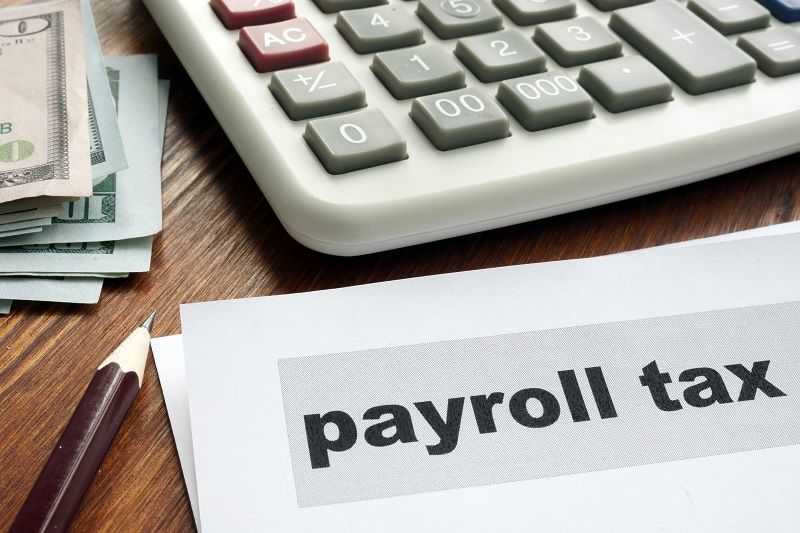By adopting a near-zero assumed rate of return, PERS can become solvent in the next decade
By Eric Fruits, Ph.D.
No one wants to talk about the biggest problem facing Oregon. It’s not the pandemic. It’s not homelessness. It’s not racial justice. The biggest crisis facing Oregon is its public employee retirement system, or PERS.
No one wants to talk about PERS because it’s boring, complex, and seemingly intractable. Mention PERS at a cocktail party and suddenly everyone will decide it’s a good time to freshen up their drink. The system is so complex, only a handful of people in the entire state have an idea of how it works. Over the past two decades numerous reforms have been tossed out by the courts, leading most legislators to simply give up making meaningful reforms. In addition, about 1 in 10 registered voters is in PERS. Add in the spouses, children, and others who have a family member in PERS, and you may be up to one-third of voters. Any politician dreaming of tweaking the system runs a real risk of losing their next election.
Nevertheless, there it is—about $25 billion (or more) in PERS unfunded liabilities. By law, these liabilities must be paid down. To get out of this hole, PERS effectively taxes state and local government payrolls. Currently, the average rate across all state and local governments is about 18% of payroll. For example, if a city employee earned a $60,000 salary, the city would have to pay $10,800 into PERS for that employee.
Many local governments pay much more than 18%. The latest presentation to the PERS Board shows a local school district paying almost 30% of payroll to the retirement system.
That’s a lot of money and it goes a long way toward explaining why Oregon is failing in so many areas. Outrageous PERS costs are why Oregon class sizes are so large and our graduation rates are the third worst in the country. Public safety is out of control because PERS drives up the cost of hiring law enforcement officers. Oregon’s foster care system has a body count because PERS makes it nearly impossible to afford enough caseworkers. Name a service that the state is failing to deliver, and you’ll find that PERS costs will be one of the key contributing factors.
I won’t dwell on all the reasons PERS became a 20-year crisis. One of the reasons, however, is an unrealistic assumption of how much PERS investments earn over time. Put simply, the PERS Board has a history of being overly optimistic about how much money the PERS fund will earn. Over the past 10 years, the actual earnings have underperformed the Board’s “benchmark” returns.
Because of the way the system works, if actual earnings don’t meet or exceed the benchmark, the PERS hole gets bigger. Even if the investments are making money, if they don’t make enough money, the problem gets worse.
Why is the assumed rate of earnings so important?
First, it feeds into projections of how big the PERS fund will grow. If earnings are big, the fund grows bigger. If the earnings are small, the fund grows slower or may shrink. If markets tank and the earnings are negative, the fund loses money. Every time the stock market crashes, a new and bigger PERS crisis follows.
Second—and more importantly—many PERS beneficiaries’ accounts are “credited” with the assumed rate. It doesn’t matter how the fund actually performs. The current assumed rate is 7.2%. If the fund is up by 15%, Tier One beneficiaries are credited with 7.2%. If the fund is down by 15%, they are still credited with 7.2%. This crediting system bakes in a massive downside risk. If the actual returns are less than the assumed rate, the PERS crisis worsens.
There is no economic rationale for tying the assumed rate of return to the crediting of accounts, but that’s the law today. That law should be changed to unlink the crediting of accounts from the PERS Board’s assumed rate. But, since there’s no realistic hope that the legislature will enact a delinking, we have to work with what we’ve got.
Over the next few months the PERS Board will be meeting to decide whether to lower its assumed rate of return. There will be numerous meetings with presentations, models, and discussions. Tune into one of the meetings and you’ll get the impression that this is all a very serious discussion. It’s not.
The assumed rate is all fiction.
The assumed rate of return is just that: an assumption. And, it’s often wrong. Over the past 20 years of PERS fund earnings, actual earnings were about 1.3 percentage points lower than the assumed rate. Over that same period, the PERS unfunded liability has exploded from $1.5 billion to nearly $25 billion. These mistakes really add up over time.
Because the legislature won’t act, the PERS Board can—and must—take the lead. It must end the fiction that the PERS fund can generate enormous earnings year over year. It hasn’t done so in the past and it won’t do so in the future.
This week, the PERS Board will consider options to lower their earnings expectations from 7.2% a year to as low as 6.8% a year. That’s not enough.
A possible solution: lower expectations.
The PERS Board must go lower. Much lower. As close to zero as possible, like the rate on a 30-year Treasury, or about 2.3%. There are both short-term and long-term implications.
In the short term, the payroll rates paid by state and local governments will increase, perhaps substantially. But, PERS has “collaring” rules that strictly limit how much rates can increase over each rate setting period.
Over the long term, with a near-zero assumed rate, the PERS fund returns will almost always beat the assumed rate. Each year of above-assumed earnings will whittle down the unfunded liability and reduce employer rates over time. My back-of-the-envelope estimates suggest the unfunded liability can be eliminated in 5-10 years. Our governments can get back to delivering services rather than raising taxes. In contrast, under the current system, the unfunded liability will never disappear.
At a minimum, the PERS Board must direct its actuaries to run the numbers. PERS is too big and complicated for back-of-the-envelope calculations. The PERS actuaries have the numbers and the models to give the Board both short- and long-run estimates of the consequences of a near-zero assumed rate. But, without the analysis, the Board will be left guessing to make the same mistakes the last two decades of PERS Boards have made.
Desperate times call for desperate measures. These are desperate times for PERS and the Board must at least consider a near-zero assumed rate of return.
Eric Fruits is Vice President of Research at Cascade Policy Institute, Oregon’s free market public policy research organization. Dr. Fruits has been studying state pension funds for nearly two decades. He has developed models of Oregon PERS and testified before the Oregon Supreme Court on legislated PERS reforms.













Bill MacKenzie
Eric,
You say, “Outrageous PERS costs are why Oregon class sizes are so large and our graduation rates are the third worst in the country.” That seems to contradict Cascade’s mantra that Oregon keeps spending tons of money on schools, but it’s not having a steadily positive impact on educational performance and graduation rates.
Richard Leonetti
I believe you have Tier 1 wrong. If the return is 15%, then 15% is added to the account. If the rate falls below the assumed rate, the assumed rate is added to the account.
You are correct that there are too many voter–beneficiaries to fix PERS if it requires a vote. But a legislature with Big B’s could authorize a new generous (8$ of salary contribution), and pass legislation that all public entities could only use the new system as there existing contracts come up for renewal. Just hoping.
Glenn Gailis
The PERS problem is a crime and no one is willing to face the problem. If the benefits are not drastically reduced Oregon will go bankrupt. One does not need an advanced economic degree to see this coming. A fifth grader with basic math skills could figure this one out. How come our state government can’t figure this out? Does this tell us something about our education system in Oregon? We are breeding mediocrity and dumbing down society. Have you ever seen the awful movie called “ Ideocracy”. Well it is happening right here in River City.